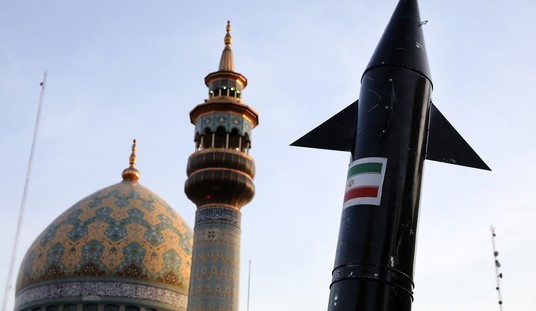According to a Twitter account that explores “the domestic and regional challenges facing Iraq’s security,” a massive convoy of ISIS fighters paraded out in the open desert in Western Anbar on Monday, providing a target rich environment for the U.S.-led coalition. But where was the coalition?
Da’ish convoy in Rutbah, W. #Anbar province, celebrating events in Ramadi. Begs the question, where’s the coalition? pic.twitter.com/hIMO5cszF4
— حيدر سومري (@IraqiSecurity) May 18, 2015
That is what you call a perfect target for some serious air power — B-52s or warthogs doing area saturation bombing — but it looks it was another missed opportunity for the coalition.
@IraqiSecurity later tweeted that the coalition destroyed 12 vehicles near Habbaniyah, E. of Ramadi — which is on the Eastern side of Anbar.
#Iraq; Reports that coalition airstrikes destroyed targeted a Da’ish convoy trying to enter Habbaniyah, E. of Ramadi. 12 vehicles destroyed.
— حيدر سومري (@IraqiSecurity) May 19, 2015
A coalition spokesman said Monday afternoon that the U.S.-led coalition “has conducted 19 air strikes in the vicinity of the Iraqi city of Ramadi over the past 72 hours.”
The strikes targeted Islamic State fighting positions, armoured and technical vehicles, and buildings they control.
Obama allegedly has a coalition of 60 nations fighting ISIS with us and they only managed 19 airstrikes in a three-day period.
During the Gulf War’s “Shock and Awe” campaign, the U.S. rained down 300 to 400 cruise missiles a day on Iraq for two consecutive days. At the beginning of the Iraq War, the U.S. unleashed 800 cruise missiles in two days.
After ISIS took over Ramadi, the Obama coalition of the willing could only squeak out a paltry 6.33 missiles a day at some buildings and vehicles. And they completely missed the huge convoy parading out in the open desert on the other side of the province.
The reason for this failure was explored by the Daily Beast last October.
Within the U.S. Air Force, there’s mounting frustration that the air campaign against ISIS in Syria and Iraq is moving far more slowly than expected. Instead of a fast-moving operation with hundreds of sorties flown in a single day—the kind favored by many in the air service—American warplanes are hitting small numbers of targets after a painstaking and cumbersome process.
The single biggest problem, current and former Air Force officers say, is the so-called kill-chain of properly identifying and making sure the right target is being attacked. At the moment, that process is very complicated and painfully slow.
“The kill-chain is very convoluted,” one combat-experienced Air Force A-10 Warthog pilot told The Daily Beast. “Nobody really has the control in the tactical environment.”
A major reason why: the lack of U.S. ground forces to direct American air power against ISIS positions.
These problems don’t seem to have improved at all since last fall.
As the Islamic State takes over more territory and advances toward Baghdad, I’m afraid we’ll continue seeing more of this weak and ineffective air campaign.








Join the conversation as a VIP Member